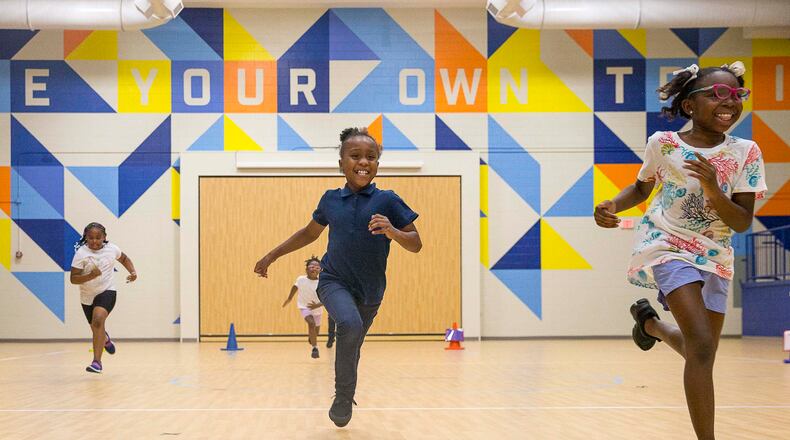In a guest column, Sharhonda Bossier, CEO of Education Leaders of Color or EdLoC, says the federal government is sending unprecedented billions to states to support the safe reopening of schools. Bossier urges policymakers to use the money for programs that support an equitable recovery in education for Black and brown children, who have been disproportionately affected by the COVID-19 pandemic.
A membership organization, EdLoC works to expand the leadership, voices and influence of people of color in education. Before joining EdLoC, Bossier worked with Education Cities, a national non-profit that supports and advises city-based education organizations on their efforts to grow great public schools. She also co-founded Families for Excellent Schools where she developed their training program and overall parent engagement strategy.
By Sharhonda Bossier
Unprecedented billions of dollars are on the way to states by way of the American Rescue Plan to support the safe reopening of the nation’s schools. Now, policymakers and school leaders in Georgia and other states should be prepared to distribute these new investments in ways that finally advance equitable learning for Black and brown children.
According to new data released by the federal government last week, the majority of students of color in America have been learning in fully remote classes, even as nearly half of their white counterparts are back to full-time, in-person schooling. In Georgia, only 28% of Black fourth graders were able to access in-person learning when the data was collected. Meanwhile, 70% of their white counterparts could.
These are alarming numbers in light of recent studies showing that remote learning environments pose multiple challenges for students of color, specifically. There’s already evidence that Black and brown students haven’t learned as much as their white peers during the pandemic. Schools in which more than half the students were people of color only learned 59% of math, and 77% of the reading that grade-level peers would typically have learned by last fall. By contrast, schools in which more than half the enrollment was white learned 69% of the math and 90% of the reading that their peers typically would have learned by the same period.
There may be many reasons these disparities are possible, but inequitable investment in the success of children of color is a principal one among them. Political leaders at the federal, state, and local levels have long ignored the multifaceted out-of-school challenges that contribute to uneven academic outcomes along racial lines. Many Black and brown students never had access to high-speed internet at home, and programs to support their social and emotional wellness were either never implemented at scale or put on the chopping block in favor of different priorities.
The billions going to states this week to help safely reopen schools provide an opportunity for the country to begin reimagining public education so that it truly works for all children. As state and local leaders seek the right approach to finally fulfill the promise of public education for all, they should model solutions developed by Black and brown leaders who share the experiences of the children hardest hit by the pandemic and who have the best sense of how to foster success for those children as a result.
For example, the diverse team at Transcend Education has partnered with Van Ness Elementary School in Washington, D.C. to develop and implement practices that meet the social, emotional, and academic needs of students. One in a series of Transcend Education’s toolkits for teachers and school leaders offers mental health data trends for young people and provides detailed recommendations for how to design a school environment that intentionally reduces the common stressors students encounter.
Among several important features, the toolkit guides teachers and school leaders to focus on supporting a young person’s ability to manage their own thoughts and feelings, their capacity to develop relationships that can buffer against stress, and their sense of belonging in school and beyond. As new money flows to schools, programs that help students of color cope with pandemic-related traumas should be implemented where they don’t exist and strengthened where they do.
Teacher diversity should also be among the highest priorities to reopen schools better than they were before the pandemic. Recent studies show that when Black children have at least one Black teacher by third grade, their chances of going to college increases.
The Black woman-led Diversity in Leadership Institute in Los Angeles works collaboratively with districts and charter schools to provide workshops, school assessments, and other services, such as a network for principals of color, to foster welcoming and supportive school environments for people of all backgrounds. In addition to a 14-month fellowship experience for aspiring, rising and current school leaders of color focused on dismantling white supremacist systems, the organization works in coalition with other organizations to advance policy changes aligned with increasing diversity among public school administrators.
Over the coming weeks, as we make tough decisions about returning to in-person learning, state and district school leaders must be bold in their actions and deliberate in ensuring the nation’s most vulnerable populations re-enter classrooms and schools that work for them. The key to success is to pursue a new paradigm in education modeled on creative solutions for Black and brown children that have been developed by leaders who look like them, and who understood their experiences well before the pandemic happened.
About the Author
The Latest
Featured




